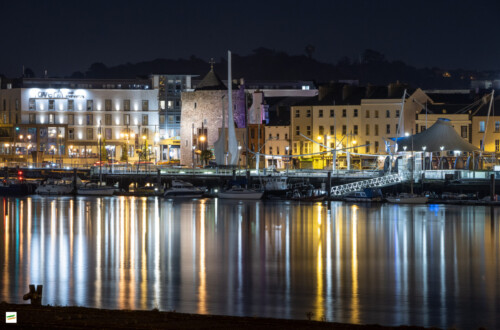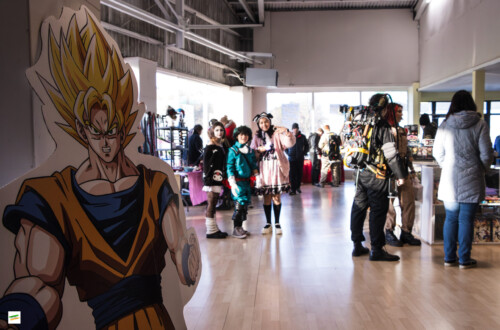
How to choose a camera – for beginners
Sometimes I get the question “Terez, give me some advice, I want to buy a camera, but I don’t know what kind” in DMs, and of course I can’t help it, and I advise as best I can. I’ve decided it’s time to share my advice with you all – whether you’re a complete beginner or have been taking pictures for a while now.
In addition to the fact that I have years of experience with photography, both beginner and advanced, I bought my first DSLR a year and a half ago and therefore went through the entire process of finding a new camera myself.
I won’t make it long – I divided the article into beginners and advanced in the end. In this one, I will cover only beginners. So let’s get down to it:
To me, a beginner is someone who either takes mobile photos here and there, or doesn’t take photos at all, but decided to start (mostly because of travel, rather than a sudden interest in wedding photography). If you fall into the first category, i.e. you take photos here and there with a mobile phone, then you probably want a camera, because your mobile phone is no longer enough for you – with quality, maybe you want a larger zoom and better bokeh (blurred background – in addition to a camera, you also need skills for this).
If you fall into the second category, that is, you don’t take a lot of photos with your mobile phone (except for random selfies or Stories on Insta), then you probably want a camera because you are going to travel, or you have moved and want to take pictures of your new city for friends and family. Perhaps you have acquired a pet and want to show them in all its glory on the Internet. Or you go to concerts and want better quality Instagram photos without having to squeeze into the front row of screaming fans at every concert (I’ll explain this in more detail below).
Either way, the first thing you need to do is determine your budget. As for the budget, I certainly wouldn’t buy literally anything. Don’t go too low with the price and at the same time I wouldn’t invest more than €400 or €500. It would be pointless.
The great thing about a camera is that looks don’t matter. I don’t think I’ve ever seen an ugly design, and as for the colors, they’re mostly all black (sometimes white and silver, or even red – it depends on the manufacturer). As for the manufacturer – don’t worry at all about whether you should buy Canon, Nikon or Sony. Each brand has something in it, but at the same time there are no big differences between them.
Then specify what you want the camera for – travel, portraits, or perhaps the aforementioned concerts. With concerts, it is probably the most complicated – in general, you are not allowed to take a camera to concerts. In addition, if they let you into the venue with a camera, it will definitely not be an DSLR camera and it will not be a large camera. Here in Ireland, for example, I have experienced that they let me take my Canon PowerShot SX510 HS to every venue where I had it with me (in the 3arena they sometimes told me that I was not allowed to take pictures, but no one ever checked and it was only at the Hans Zimmer gig). But as you can see on my blog, you can also get nice photos with a PowerShot (In this case, I don’t shoot manually, because the PowerShot is harder to control than a DSLR. In addition, I shoot at 3 megapixels per photo, which is also a tragedy. It also depends on the lighting of the show itself and I also have X concerts behind me,…). But how do those great photos from concerts of your favorites appear on the Internet? These are from professional music photographers who get their accreditation before every concert (this is only given to people who take photos for the media and only lasts for the first 3 songs, which is sh*t if you ask me). So unless you’re going to start a career as a music photographer, it doesn’t really matter what camera you smuggle with you to your next concert. It doesn’t matter at all when it comes to traveling and landscapes.

As a beginner, you don’t have much experience and you probably aren’t even sure what all those camera parameters mean. And in general, you can take a nice portrait with the same camera you use on vacation (if you know how). That’s why it’s best for beginners to buy a cheaper camera and after a while, when they get better at taking pictures, they’ll see for themselves if the current camera suits them at all, or if they need an upgrade. I also recommend that your first camera has an automatic mode. You really can’t take pictures manually if you don’t understand what all those numbers on the screen mean.
Before I throw at you some random models that might suit beginners, I want to emphasize one more thing: reviews. Don’t buy rabbits in a bag. If you have an acquaintance/friend who is a photographer (yes, I count myself too), feel free to send them what you have chosen and what you want it for and they will tell you if it is a good camera and if it is worth the price. If you also want independent reviews, you can of course google/try the selected model on YouTube. I would also recommend, if you have an Instagram account, to find the model on it. Lots of people use the model number as a hashtag, so you can get an idea of the quality of photos from different people around the world (for example, I use the hashtag #eos90d for my baby). I also recommend Explorecams.com. It works similar to Instagram – you enter your chosen model and you get photos uploaded by people from all over the world. If you are thinking about a DSLR, then you can also enter the lens model.
This is exactly how I made my own decision a year and a half ago. At that time, Corona was still rampant and I didn’t feel like running around the shops. That’s why I bet on Instagram, ExploreCams and countless hours watching YouTube reviews. And I must say that I am really satisfied with my baby and I could not have chosen better.

Okay, I quickly scoured the internet and these are the cameras I would recommend to absolute beginners. Budget: €400 (taken from Irish websites/price may vary slightly)
Canon EOS 4000D – look for a deal with the lens
Canon PowerShot SX540 HS (lens attached to camera body)
Nikon COOLPIX B500 (lens attached to camera body)
Panasonic Lumix TZ70 or TZ80 (pocketable but powerful) or their Superzoom range
Sony DSC-H400 (lens attached to the camera body) or Alpha 58 – but look for a deal with the lens
Feel free to message me on Instagram if you need advice on choosing (after all, technology is always moving forward), let me know in the comments if the article helped you and happy shooting!
If you know what you want from your future camera, but don’t know where to start, then look forward to my advanced article!




